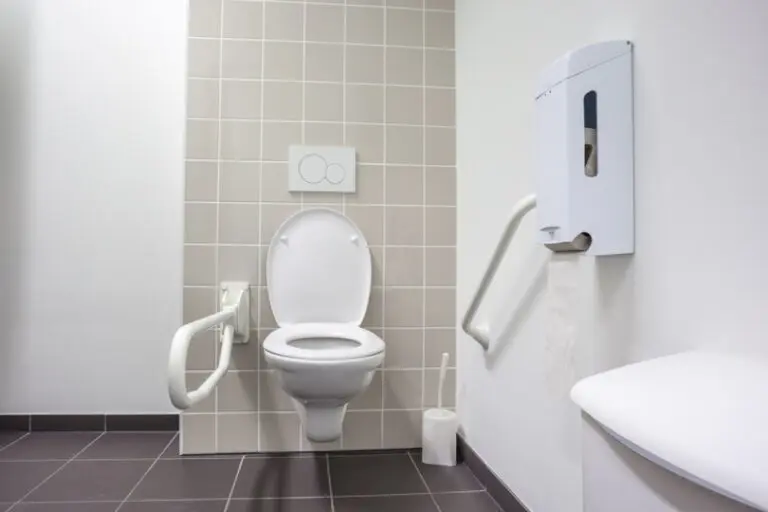Selecting the right toilet seat for handicapped individuals is crucial for maintaining independence, comfort, and dignity in daily life. This comprehensive guide will help you understand the key factors to consider when choosing an appropriate toilet seat for people with disabilities or mobility challenges.
Understanding the Importance of Proper Toilet Seats for the Disabled
When it comes to bathroom accessibility, knowing how to select right toilet-seat for handicapped people can significantly impact their quality of life. A properly chosen toilet seat can enhance independence, reduce the risk of accidents, and provide much-needed comfort during daily routines.
Key Factors to Consider When Choosing a Toilet Seat
Height Requirements
The height of the toilet seat is perhaps the most critical factor when learning how to select right toilet-seat for handicapped people. Standard considerations include:
- ADA-compliant toilet seats should position the top of the seat between 17 and 19 inches from the floor
- Raised toilet seats can add 2-6 inches of height to existing toilets
- Consider the specific needs and mobility level of the user when determining optimal height
Weight Capacity
Different toilet seats come with varying weight capacities, making this an essential consideration:
- Standard toilet seats typically support 300-350 pounds
- Heavy-duty models can support up to 1000 pounds
- Always choose a seat rated well above the user’s actual weight for safety
Material and Durability
The material of the toilet seat affects both comfort and longevity:
- High-quality plastic or polymer seats offer durability and easy cleaning
- Padded seats provide extra comfort but may require more frequent replacement
- Anti-bacterial coatings can help maintain hygiene
- Consider temperature sensitivity, especially for users with limited mobility
Types of Specialized Toilet Seats
Raised Toilet Seats
Understanding how to select right toilet-seat for handicapped people often starts with considering raised seats:
- Available in various height increments
- Some models include integrated handles
- Can be permanent or temporary installations
- May come with or without lid options
Toilet Seat with Arms
Support arms are crucial for many users:
- Provides additional stability during transfers
- Arms should be sturdy and well-anchored
- Consider adjustable width options
- Look for padded or textured grips
Bidet Toilet Seats
Modern bidet seats can enhance independence:
- Offers hands-free cleaning
- Temperature-controlled water
- Remote control operation
- Built-in drying features
Safety Features to Consider
Stability and Support
When learning how to select right toilet-seat for handicapped people, safety features should be a top priority:
- Non-slip surfaces and rubber grips
- Secure locking mechanisms
- Stable base design
- Additional support brackets if needed
Additional Safety Elements
- Easy-to-clean surfaces to maintain hygiene
- Smooth edges to prevent injury
- Visual indicators for proper installation
- Emergency release mechanisms
Installation and Maintenance Considerations
Professional Installation
Consider these factors for installation:
- Proper mounting hardware included
- Clear installation instructions
- Professional installation may be required for certain models
- Regular maintenance checks recommended
Cleaning and Maintenance
Regular maintenance ensures longevity:
- Use appropriate cleaning products
- Check stability regularly
- Replace worn parts promptly
- Schedule periodic professional inspections
Special Considerations for Different Disabilities
Mobility Issues
Different mobility challenges require specific features:
- Transfer aids for wheelchair users
- Support handles for those with balance issues
- Easy-to-operate mechanisms
- Adequate space for caregivers if needed
Visual Impairments
Consider these features for visually impaired users:
- High-contrast colors
- Tactile indicators
- Simple, intuitive designs
- Clear audio feedback for electronic models
Cost and Insurance Coverage
Budget Considerations
Understanding the financial aspects:
- Basic models start around $50
- Advanced features can increase costs significantly
- Installation fees may apply
- Consider long-term durability versus initial cost
Insurance and Coverage Options
Explore payment possibilities:
- Medicare coverage requirements
- Private insurance options
- Veterans’ benefits
- State assistance programs
Common Mistakes to Avoid
When learning how to select right toilet-seat for handicapped people, avoid these common errors:
- Choosing based solely on price
- Ignoring weight capacity specifications
- Failing to consider installation requirements
- Not accounting for specific user needs
Making the Final Decision
Assessment Checklist
Use this checklist when making your selection:
- Measure bathroom space carefully
- Consider the user’s specific needs
- Evaluate installation requirements
- Review maintenance needs
- Check warranty terms
- Verify insurance coverage
Professional Consultation
Consider seeking professional advice:
- Occupational therapists
- Physical therapists
- Medical equipment specialists
- Healthcare providers
Conclusion
Understanding how to select right toilet-seat for handicapped people involves careful consideration of multiple factors. The right choice can significantly improve independence and quality of life for individuals with disabilities. Take time to evaluate all options, consult with healthcare professionals, and consider the specific needs of the user before making a final decision.

Robert Muller writes about home improvement at Floarena. He studied Home Remodeling and Repair. He has 15 years of experience. His blog posts are easy to understand. Robert loves his work and is trusted in his field.






